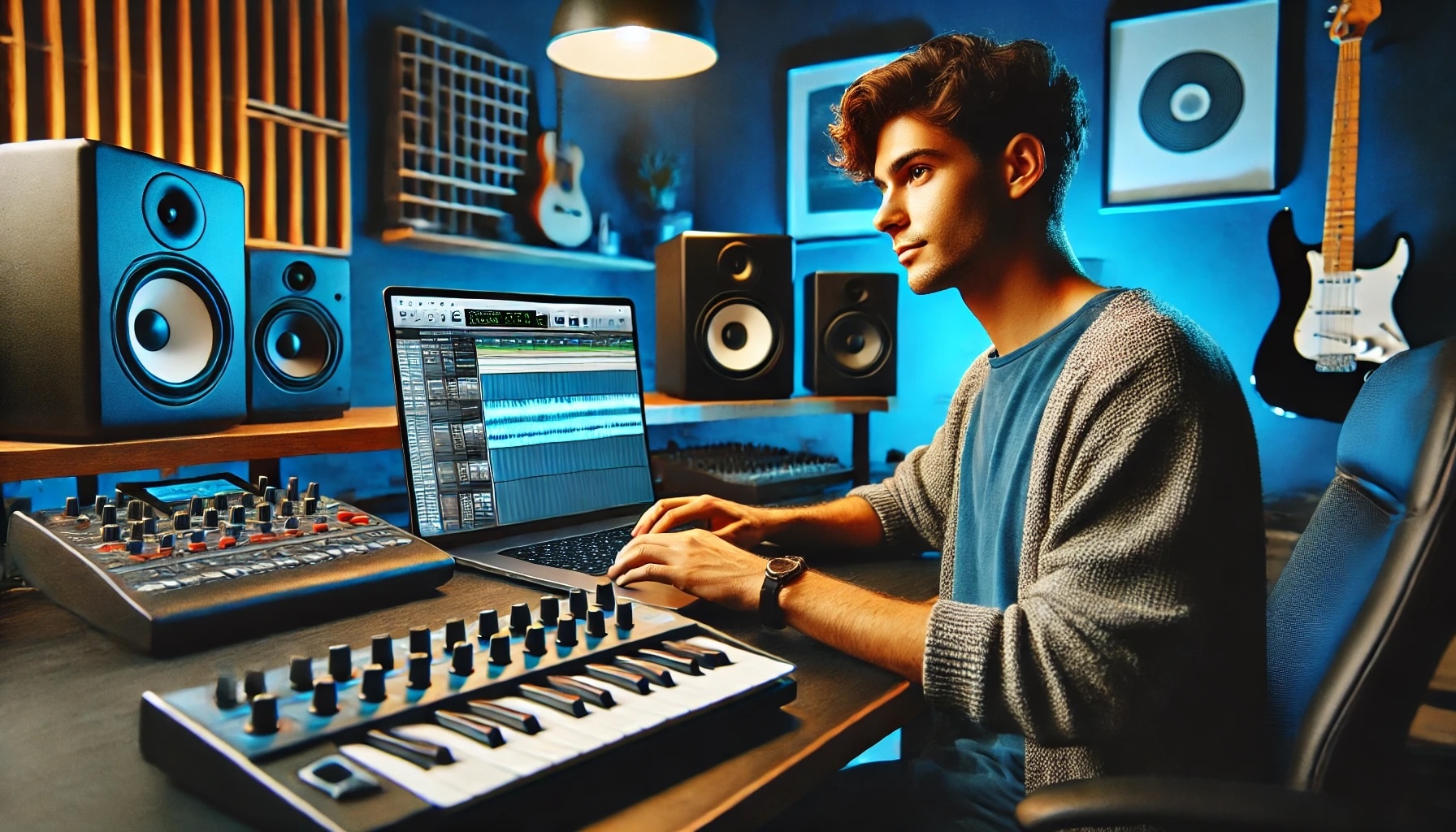The Ultimate DIY Guide to Learning Audio Engineering on a Budget

Big Question: How can you learn professional audio engineering without paying for an expensive recording school?
Big Answer: With the right tools, resources, and mindset, you can master audio engineering at home for a fraction of the cost of traditional education. From recording and mixing to mastering and sound design, this guide will help you build pro-level skills on a budget.
Here’s a 9-step roadmap to becoming a self-taught audio engineer.
1. Set Up Your Affordable Home Studio
Before you start learning, you need the right environment to practice.
-
Budget-Friendly Gear: Get an audio interface (Focusrite Scarlett Solo), a large-diaphragm condenser mic (Audio-Technica AT2020), and a pair of studio headphones (Audio-Technica ATH-M40x).
-
Free DAWs to Start With: Try Cakewalk, Tracktion Waveform Free, or Pro Tools Intro.
-
Treat Your Room: Use blankets, rugs, and foam panels to reduce reflections and improve sound quality.
2. Master the Basics of Sound & Recording
Understanding sound fundamentals helps you make better recordings.
-
Learn Gain Staging: Keep your recording levels between -12dB and -6dB to avoid distortion.
-
Mic Placement Matters: Experiment with distance and angles for cleaner recordings.
-
Use Direct Monitoring: Reduces latency for better real-time performance.
Master Audio Engineering on a Budget: 9 Steps to Learn Like a Pro Without Formal Schooling
3. Learn Digital Audio Workstation Workflow
Your DAW is your digital studio—learn how to use it efficiently.
-
Explore DAW Tutorials: Watch free YouTube videos for Ableton Live, Pro Tools, FL Studio, or Logic Pro.
-
Use Keyboard Shortcuts: Speed up editing and workflow with built-in DAW shortcuts.
-
Experiment with Recording & Editing: Start by recording simple voiceovers or acoustic guitar.
 ⭐️ Start by downloading all of my FREE Music Production Guides ⭐️ It took me years to learn this stuff!
⭐️ Start by downloading all of my FREE Music Production Guides ⭐️ It took me years to learn this stuff!
4. Understand EQ & Frequency Balance
EQ is the most powerful tool for shaping sound.
-
Cut Low Rumble: Remove frequencies below 100Hz for cleaner vocals and instruments.
-
Boost Presence: A slight boost around 3-6kHz makes sounds pop in the mix.
-
Subtract Before Adding: Instead of boosting, try cutting problem frequencies first.
5. Learn Compression for Pro-Level Dynamics
Compression evens out volume and makes tracks sound polished.
-
Use a Moderate Ratio: Start with 3:1 or 4:1 for smooth vocal compression.
-
Slow Attack for Natural Sound: Let transients through before clamping down.
-
Watch the Gain Reduction: Keep it around -3dB to -6dB for subtle control.
6. Get Hands-On Mixing Practice
Mixing is where your recordings come to life—practice is key.
-
Start with Volume Balance: Get the mix sounding good before adding effects.
-
Pan Instruments for Width: Keep bass and vocals centered, pan guitars and synths wider.
-
Use Reverb & Delay Sparingly: Adds depth but can easily muddy the mix.
 ⭐️ Take my Free EXPERIENCE: Ableton Live Mini-Course ⭐️
⭐️ Take my Free EXPERIENCE: Ableton Live Mini-Course ⭐️
7. Learn Mastering Techniques for a Final Polish
Mastering makes your mix sound great across all playback systems.
-
Use a Reference Track: Compare your mix with professionally mastered songs.
-
Apply Light EQ & Compression: A gentle boost around 16kHz adds air and clarity.
-
Limit Loudness Without Clipping: Keep peaks around -0.3dB for clean results.
8. Use Free & Affordable Learning Resources
Skip the expensive classes and learn online.
-
YouTube Channels: Follow Pensado’s Place, Produce Like A Pro, and Mix With The Masters.
-
Free Online Courses: Check out Coursera, Berklee Online (free intro classes), and SoundGym.
-
Join Online Communities: Engage with Reddit r/audioengineering, Gearspace forums, and Facebook groups.
9. Build a Portfolio & Get Real-World Experience
The best way to learn is by doing—start working on projects.
-
Practice with Local Artists: Offer free or budget-friendly mixing services.
-
Remix Songs & Enter Contests: Websites like Splice and Metapop have remix competitions.
-
Intern or Assist at a Studio: Even part-time exposure can accelerate your growth.
Audio Engineering for Noobs: A Beginner's Guide to Sonic Mastery
Final Thoughts
Becoming a professional-level audio engineer without going to school is 100% possible. With the right tools, free learning resources, and consistent hands-on practice, you can develop industry-standard skills without spending a fortune. Start today, and build the foundation for your music production career! 🎚️🎛️🔥
⭐️ Download my Free Magic Delay settings Guide ⭐️
⭐️ Download my Free Magic Reverb settings Guide ⭐️
#protools #daw #homestudio #recordingschool #recording #musicproduction
Also read:
9 Must-Know Beatmaking Techniques for Beginner Music Producers in 2025
9 Must-Know Vocal Production Techniques for Beginner Music Producers in 2025
9 Must-Know Music Production Techniques for Beginners and Home Studios in 2025

Hey, I'm Futch - Music Production Coach and Ableton Certified Trainer
Learn how to make your first song and beat in Ableton Live with my
FREE 90-minute Ableton Live course
I've been teaching audio engineering and music production for 35 years.⭐️
Check out my new online music production program: Music Production Ninja...







